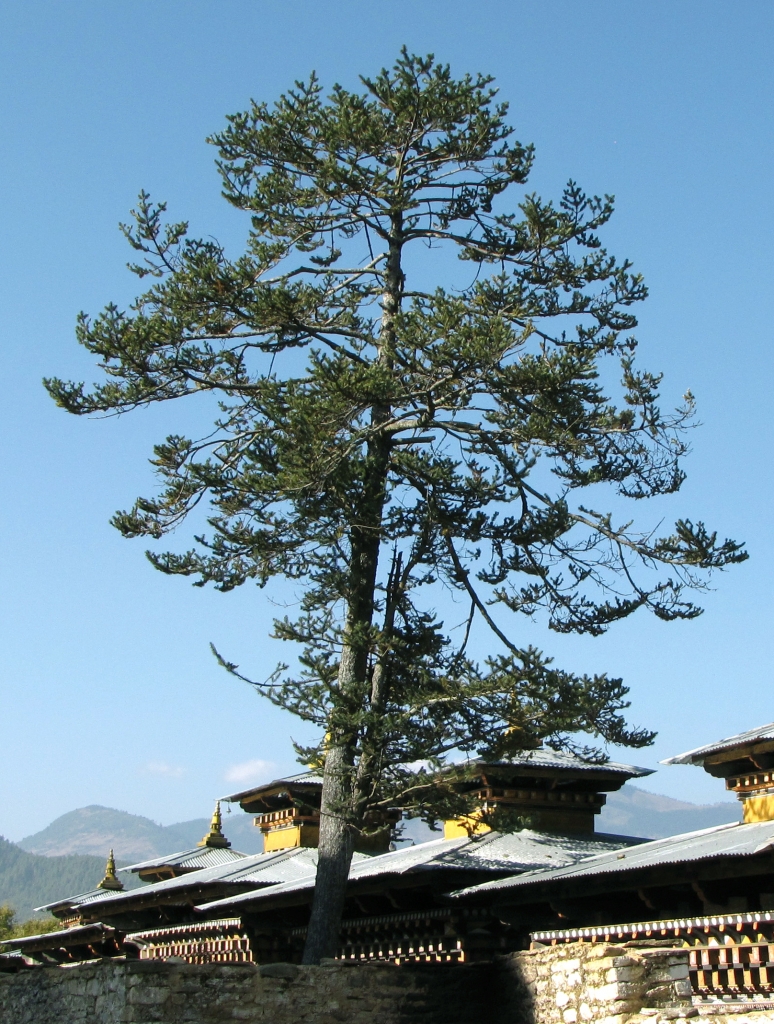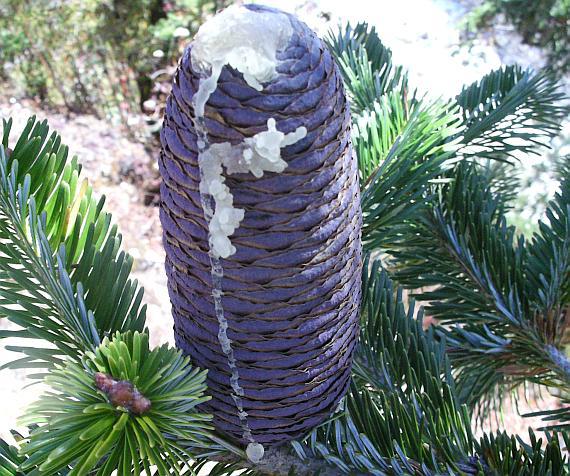Abies densa, first described by W. Griffith in 1854 is commonly known as Gobria and gobra salla in Nepal, dunshing in Bhutan, and Sikkim fir in the western world. Occasionally this species is referred to as Abies spectabilis var. densa and is considered similar to Abies delavayi, but Aljos Farjon regards it as consistently different in morphology, and it also has a distinct distribution.
Description. Sikkim fir is an evergreen coniferous tree growing to mature height of 100 to 120 feet (30 - 60 m) tall, with trunk diameters sometimes reaching 8 feet (2.5 m) wide. The bark breaks to thick angular plates; the branchlets are light grayish-yellow when young, later grayish-brown to gray. The needles are up to 1.8 inches (4.5 cm) long, with somewhat recurved margins. The seed cones are up to inches 4 inches (10 cm) long, bluish gray or dark Blue to bluish brown, with bract length varying among individuals (slightly included or with more or less protruding, straight or recurving tips).
Distribution. This species is native to the Himalayas - eastern Nepal, Bhutan, India (western Bengal) and Tibet. Abies densa occurs in cloud forests at 7,800 to 12,000 feet (2,450 - 4,000 m) of elevation. Its preferred climate is monsoonal, with over 60 inches (2,000 mm) of annual rainfall, featuring warm wet summers and cold snowy winters.

